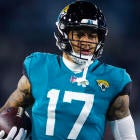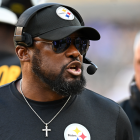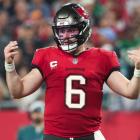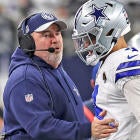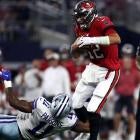Once upon a time, the Oakland Raiders were an NFL franchise to be envied. Three Super Bowls were won in an eight-year span during the mid-'70s and early '80s. Those days are long gone.
The Raiders are 3-3 for only the second time since the 2002 Super Bowl season after a decisive victory against the San Diego Chargers, which wasn't nearly as close as the 37-29 score suggests. Last season's win total has already been matched. Oakland's 12-year streak of non-winning seasons may not end this season, but there's finally light at the end of the tunnel.
Here's a look at how the Raiders got on the road to respectability and what can be done to starting living up to the team's slogan of "Commitment to Excellence."
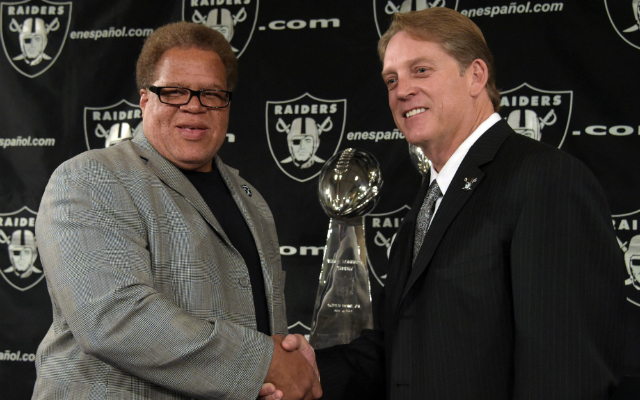
Sound salary-cap management
Reggie McKenzie was hired in January 2012 to oversee one of the NFL's most difficult rebuilding projects in recent history. His first order of business was cleaning up the salary cap. The former Green Bay Packers director of football operations inherited a mess that couldn't be fixed in one season due to the previous regime's habit of overpaying players without any long-term vision.
McKenzie's tenure began with the Raiders needing to reduce cap obligations by approximately $31 million to comply with cap rules at the start of the 2012 league year. It was accomplished by restructuring (Carson Palmer, Richard Seymour, etc.) and terminating multiple contracts (Stanford Routt, Kamerion Wimbley, etc.). This left the Raiders with the third highest amount of dead money (cap charges for players no longer on the roster) in 2012 at slightly more than $28 million.
The Raiders had in excess of $55 million in dead money during 2013, which is unheard of, while McKenzie completed his two-year process of cleaning up the cap by continuing a roster purge that left him with one of the NFL's least talented rosters. Nearly 45 percent of their adjusted salary cap of $127.187 million was devoted to dead money. The upside of the roster purge was the Raiders had the most cap room in the league at the start of free agency in 2014 with slightly more than $59 million of space.
McKenzie has ensured that the Raiders won't repeat their cap mistakes of the past by utilizing a "pay as you go" contract structure with almost all non-draft pick signings. A player's cash and cap numbers are the same in each contract year because he is receiving salary guarantees instead of a signing bonus under the "pay as you go" model. The first contract year usually consists of a fully guaranteed base salary and a roster bonus due a few days after signing. Since there isn't any signing bonus proration, the Raiders don't have any dead money if a player is released during the latter part of a deal provided there hasn't been a restructure.
Solid drafting
McKenzie was handcuffed initially because of cap issues and a lack of early draft picks. Multiple trades before McKenzie was hired left the Raiders with just fifth- and sixth-round picks in the 2012 NFL Draft until compensatory picks in the third, fourth and fifth rounds were awarded. McKenzie didn't have a full complement of picks until the 2013 draft.
The best pick in McKenzie's first two drafts is running back Latavius Murray. The 2013 sixth-round pick is an upgrade over 2010 fourth-overall pick Darren McFadden, who produced one 1,000-yard rushing season in his seven years in Oakland. Murray is on pace to gain 1,123 yards on the ground this season. Cornerback D.J. Hayden, who was taken with the 12th-overall pick after moving down from the third pick, has been a disappointment.
McKenzie struck gold in the 2014 draft by landing foundational players at premium positions. Most importantly, a potential franchise quarterback was selected in the second round with Derek Carr (36th overall). He is arguably the best quarterback in the NFL under the age of 25. Carr has drawn comparisons to two-time NFL MVP Aaron Rodgers from current Green Bay Packers wide receiver James Jones, a member of the Raiders last season, and former Packers cornerback Tramon Williams, who faced the Raiders earlier this season. The Raiders could have stability at the most essential position for at least a decade provided Carr demonstrates as he matures that the lofty comparisons have some validity.
Defensive end/outside linebacker Khalil Mack, the fifth-overall pick, was third in the NFL Defensive Rookie of the Year voting. The pass rusher ranked 39th on Pro Football Focus' (PFF) top 101 players for the 2014 season.
Third-round pick Gabe Jackson has emerged as a Pro Bowl-caliber left guard. Seventh-round pick T.J. Carrie is the secondary's most versatile player, shifting from cornerback to safety due to injury.
The 2015 draft class probably won't live up to its predecessor. Fourth-overall pick Amari Cooper has already made the class a success. The wide receiver is a leading candidate for NFL Offensive Rookie of the Year. Cooper, 21, is on track to become Oakland's first 1,000-yard wide receiver since Randy Moss in 2005. By sustaining his current pace of 88 receptions and 1,384 receiving yards, the rookie would post the second-best receiving yardage total in a single season in franchise history. It may just be a matter of time before Carr and Cooper become the NFL's best passing combination.
The Raiders are also getting early contributions from defensive lineman Mario Edwards, Jr., tight end Clive Walford and linebacker Neiron Ball, who were taken in the second, third and fifth rounds respectively. McKenzie was active on the third and final day of the draft by turning seven picks into 10 through trades. Ball was selected with one of the acquired picks.
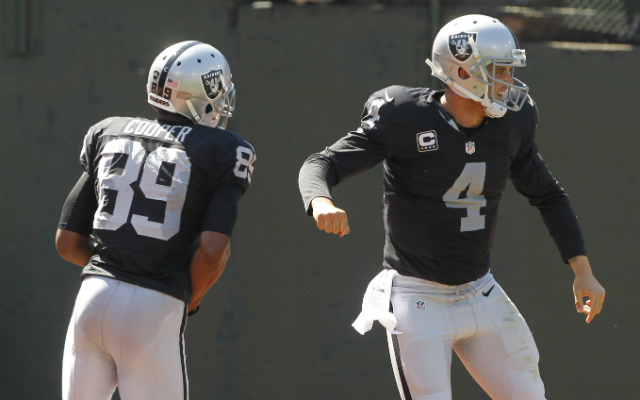
Ownership patience
Owner Mark Davis preached patience when he hired Reggie McKenzie. He resisted the urge of the quick fix as a way back to the franchise's glory days like his legendary father, Al Davis, took in his final years in charge before his death in 2011. Staying patient couldn't have been easy with the Indianapolis Colts and Kansas City Chiefs going from 2-14 records to the playoffs during McKenzie's first two seasons when the Raiders had consecutive 4-12 records.
McKenzie's job was thought to be in jeopardy once his handpicked head coach Dennis Allen was fired after an 0-4 start to the 2014 season. He may not have survived if Jon Gruden had been willing to leave the broadcast booth for a second stint as Raiders coach or Jim Harbaugh had been interested in staying in the NFL instead of returning to his alma mater, the University of Michigan. Harbaugh likely would have insisted on total control of football operations after an acrimonious relationship with general manager Trent Baalke while coaching the San Francisco 49ers.
McKenzie's success in the deconstruction phase of the rebuilding process and putting together a stellar 2014 draft were likely his saving grace despite some blunders during his tenure that created doubts about his ability to resurrect the franchise. Davis didn't allow McKenzie to pick Allen's replacement. He was the driving force behind Jack Del Rio becoming head coach.
A lot of money was wasted trying to solve the quarterback situation prior to drafting Carr, who was reportedly a pre-draft favorite of Davis, after Palmer was traded to the Arizona Cardinals in 2013 for refusing to take a $3-million pay cut from his $13-million salary.
Acquiring Matt Flynn from the Seattle Seahawks for a 2014 fifth-round pick and a conditional 2015 pick right after moving Palmer was a disaster. He was released five games into the season because he couldn't beat out Terrelle Pryor, who is attempting to prolong his NFL career by switching to wide receiver, for the starting job. This was after McKenzie increased Flynn's 2013 salary by $1.25 million while also guaranteeing it in two contract restructures to create desperately needed cap room.
A 2013 fourth-round pick was used on Tyler Wilson. He was considered a potential quarterback of the future when drafted but spent most of the season on Oakland's practice squad before the Tennessee Titans signed him to their 53-man roster late in the year. He's been out of the NFL since his rookie year. Undrafted Matt McGloin, who was signed primarily as a training camp arm, shared starting quarterback duties with Pryor.
Matt Schaub was supposed to provide stability at quarterback when he was acquired from the Houston Texans in 2014 for a sixth-round pick in that year's draft. It was a repeat of the Flynn situation, with Schaub becoming a high-priced backup when Carr was named the Week 1 starter. Schaub made $8 million in 2014 before being released this offseason.
McKenzie's decisions during 2014 free agency left a lot to be desired when he finally had the financial flexibility to put his stamp on the Raiders after limited cap space forced him to be a bargain shopper in previous years. Curiously, McKenzie let defensive end Lamarr Houston and offensive tackle Jared Veldheer become free agents without making a concerted effort to retain them or using a franchise or transition tag on one of them. Generally, teams do everything reasonably possible to prevent core players from hitting the open market when rookie contracts expire, especially teams without an abundance of talent.
The Raiders pulled out of a five-year, $42.5-million deal (with $21.5 million fully guaranteed) for offensive tackle Roger Saffold after a physical by the team doctors revealed a torn labrum with a recommendation of immediate shoulder surgery. Saffold had passed his exit physical with the St. Louis Rams at the end of the 2013 season. Since the Raiders were receiving heavy criticism in league circles for overpaying Saffold, there was a sentiment that the ridicule played a part in cancelling the deal. There were conflicting reports about whether McKenzie or Davis made the final decision on Saffold.
Eleven players from other teams were signed in the early stages of free agency. These newcomers were on at least their third NFL contracts, had injury concerns, were unwanted by their former teams or were considered declining players. The average age of the players at the start of the 2014 regular season was 30.2 years old. Though left tackle Donald Penn being the best signing of the bunch, most are no longer on the roster.
Davis' patience was rewarded because McKenzie learned from his 2014 free agency mistakes by mostly targeting younger players with expiring rookie contracts who are entering their prime. Although the Raiders were unable to land any of the big names (wide receivers Randall Cobb and Jeremy Maclin, running back DeMarco Murray, defensive tackle Ndamukong Suh and tight end Julius Thomas) targeted despite a willingness to outbid other teams, the players signed are mostly paying dividends.
Rodney Hudson, who was given a five-year, $44.5-million contract to briefly become the NFL's highest paid center, is PFF's sixth-highest-rated player at the position in 2015. Defensive tackle Dan Williams has helped the Raiders go from 22nd against the run (119.4 yards per game) last season to third this season (84.3 yards per game). He received a four-year, $25-million deal. Super Bowl XLVIII MVP Malcolm Smith, who signed a two-year, $7-million deal, is becoming increasing comfortable in his new surroundings.
Wide receiver Michael Crabtree bet on himself with a one-year, $3.2-million deal (worth a maximum of $5 million through incentives) because of a soft free-agent market after taking a backseat to an aging Anquan Boldin in San Francisco's passing game last season. He's having a bounce-back year in which he's on track for a career high 88 catches and 1,016 receiving yards.
The Raiders also took a calculated risk in signing pass rusher Aldon Smith to a team-friendly, one-year, $5.25-million deal (worth a maximum of $8 million with incentives) after the 2011 Defensive Rookie of the Year wore out his welcome with the 49ers in the preseason because of his well-documented off-the field troubles.
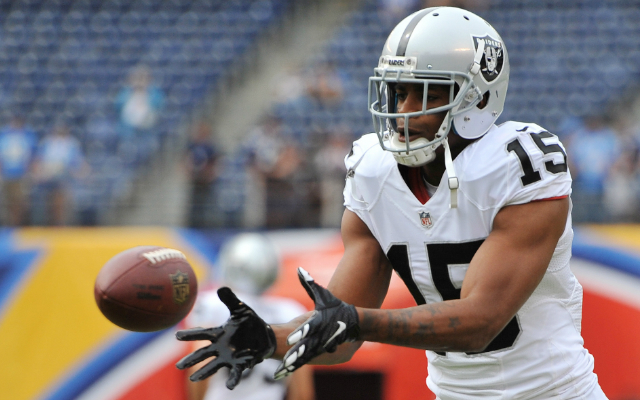
Outlook
A possible relocation to Los Angeles and an unsettled stadium situation should the Raiders remain in the Bay Area are looming over the franchise. A decision about a move probably won't be made by the NFL until early next year.
It remains to be seen whether the Raiders can remain in contention for a Wild Card playoff berth. Winning the AFC West in 2016 isn't out of the question if the stars of the last two draft classes continue improving as expected, and if there's another upgrade in roster talent in the offseason.
The Raiders will need to spend money because they are in danger of being under the minimum-spending thresholds in the NFL's Collective Bargaining Agreement. Each team is required to spend 89 percent of the salary cap in cash over four-year periods of 2013 through 2016 and 2017 through 2020. The Raiders are currently at 87.8 percent spending since 2013, according to NFLPA data.
Oakland is in excellent shape with the 2016 salary cap. There are $79.811 million in 2016 cap obligations with 34 players under contract while the top 51 cap numbers count during the offseason. The Raiders have the fourth-most current cap room in the NFL with $13.886 million, which can be carried over to 2016.
Assuming Oakland's six restricted free agents and two exclusive rights players are given tenders, and practice squad players are signed to futures contract to fill out the remainder of the top 51, the cap obligations should increase to $95.8 million before the carryover room is factored into the equation. The Raiders would have approximately $72 million of cap room heading into 2016 free agency if the cap rises to $154 million, which is a similar percentage increase as in the last two years.
The Raiders will have 14 unrestricted free agents after the season. Seven players are key contributors. Older players Penn, defensive end Justin Tuck and safety Charles Woodson could be retained on short-term deals. The Raiders should seriously consider approaching Crabtree before the end of season about a contract extension. If he and Cooper continue at their current pace, the Raiders will have two 1,000-yard wide receivers in the same season since Hall of Famers Tim Brown and Jerry Rice in 2001.
Smith is the most intriguing case because of his checkered past. A franchise tag could be an option if the Raiders aren't comfortable making a long-term commitment to him. The defensive end franchise tag should be in the neighborhood of $15.75 million next year. The Raiders would get about a $2 million break on the tag if Smith were to be classified as linebacker for these purposes.
The Raiders should try to hit a home run again in the open market while keeping in mind that free agency can be fool's gold. Taking a step forward this season may make Oakland a more attractive destination for marquee free agents. Even so, it still might also be necessary for the Raiders to continue expressing a willingness to overpay with the "pay as you go" contract approach.
A flurry of signings leading up to the start of the regular season took players that would have been highly sought after in free agency off the market. It would be a surprise if outside linebacker Von Miller and defensive end Muhammad Wilkerson became free agents.
A top priority should be signing a cornerback. Assuming Josh Norman is franchised by the Carolina Panthers or signs a new deal, Sean Smith could be a possibility. Six-foot-three, 216-pound press coverage cornerbacks are a rarity. Kansas City may make re-signing safety Eric Berry a higher priority. Signing Smith would further weaken the division rival just as the acquisition of Hudson did.
The right side of the offensive line needs to be addressed. The Cincinnati Bengals let right tackle Andre Smith test the market in 2013 before re-signing him to a team-friendly deal when free agency didn't go as he anticipated. Mitchell Schwartz (Cleveland Browns) could be another target at right tackle. Returning to the Bay Area or home could be appealing to the Cal-Berkeley product and Los Angeles native. Austin Howard could be moved back to right guard if not released.
Inside linebacker Curtis Lofton has been the biggest disappointment of this year's free-agent class. The Raiders will pick up $5.5 million of cap room by letting him go before $3.5 million of his $5.35-million 2016 base salary becomes fully guaranteed on February 10, which is the third day of the 2016 waiver period.
Depending on which tender he is given, making a run at Denver Broncos restricted free agent linebacker Brandon Marshall with a difficult-to-match, front-loaded offer sheet should also be given consideration. His lowest tender, which should be approximately $1.65 million, would only require a fifth-round pick as compensation if Denver declines to match. It might still be worth exploring if Marshall is given a higher tender, where a second-round pick would be the acquisition cost.
Joel Corry is a former sports agent who helped found Premier Sports & Entertainment, a sports management firm that represents professional athletes and coaches. Prior to his tenure at Premier, Joel worked for Management Plus Enterprises, which represented Shaquille O'Neal, Hakeem Olajuwon and Ronnie Lott. You can follow him on Twitter @corryjoel. You can email him at jccorry@gmail.com.








